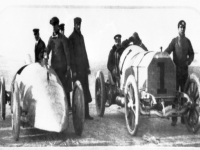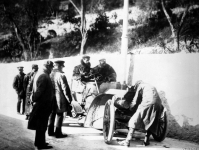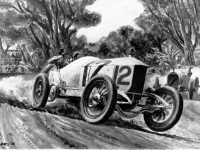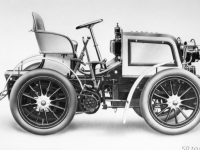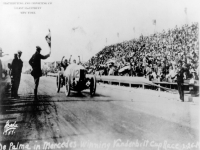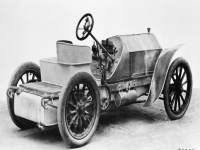Automobiles
110 years ago - William Vanderbilt sets new speed record
land vehicle - Racing Car
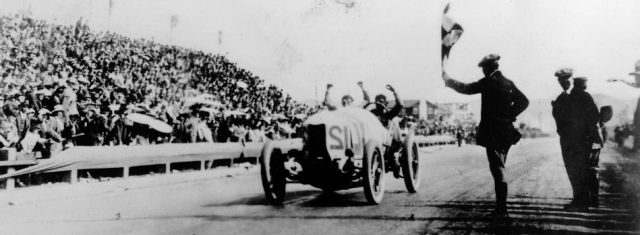
William Vanderbilt (Source: © 2014 Daimler AG)
USPA NEWS -
William K. Vanderbilt jr. establishes an absolute world record in Daytona.
New York millionaire goes from racing driver to patron of motor sport.
The history of motor sport in the USA begins on the sands of Daytona Beach.
(Source: © 2014 Daimler AG)
New York millionaire goes from racing driver to patron of motor sport.
The history of motor sport in the USA begins on the sands of Daytona Beach.
(Source: © 2014 Daimler AG)
The 1904 Ormond-Daytona race week was shaped by record-breaking performances by William K. Vanderbilt jr. at the wheel of a Mercedes 90 hp racing car. 110 years ago, the New York millionaire dominated the “Florida Speed Carnival“. Established in 1903, the event featured races and record drives on a flat sandy beach. In all, Vanderbilt won six races and set seven speed records in January 1904. In the same year, he established the Vanderbilt Cup, the first major prize in US motor sport.
In the early hours of 27 January 1904, a Mercedes 90 hp racing car was racing over the flat sandy beach of Ormond-Daytona in Florida. After a small number of test runs William Kissam Vanderbilt jr. (1878 to 1944), affectionately known in the media as “Willie K.“, had set off on a record-breaking trip across the sands. The millionaire from New York, son of railway baron William K. Vanderbilt, had a good feeling at the wheel of his racing car supplied by the German Daimler-Motoren-Gesellschaft (DMG).
The racing driver´s confidence was borne out when the eight timers clicked their stopwatches: 39 seconds for the flying mile was the official result. This corresponded to 92.3 miles per hour (148.54 km/h), marking an absolute world record for land vehicles. “Really, I did surprise myself,“ remarked the racing driver with typical Anglo-Saxon reserve on alighting from his Mercedes, according to an entry in the “American Heritage“ compendium by automobile journalist and historian Beverly Rae Kimes in 1987.
At this point, William K. Vanderbilt junior was unaware that the American record would fail to meet with the approval of the European racing establishment, however. Later in the year, the newly established Association Internationale des Automobile Clubs Reconnus (AIACR) actually declined to officially recognise the record. In so doing, the AIACR did little to dent the 25 year-old racing driver´s kudos for having set an absolute world record for land vehicles in America, however. The feat achieved by the Mercedes 90 hp racing car and its driver was beyond dispute.
Close ties with Daimler
The links between Vanderbilt and DMG extend back to the beginnings of the Mercedes brand. Back in 1900, he bought a Daimler Phoenix 23 hp racing car in which he broke records in the USA. He even challenged the source of the family´s fortune by racing against a train. In 1902, the American millionaire acquired a 40 hp Mercedes Simplex with racing body in which he undertook various trips, including a run from Paris to Nice. In May 1902, he set a world record over one kilometre in this car, attaining a speed of 111.8 km/h from a flying start.
The links between Vanderbilt and DMG extend back to the beginnings of the Mercedes brand. Back in 1900, he bought a Daimler Phoenix 23 hp racing car in which he broke records in the USA. He even challenged the source of the family´s fortune by racing against a train. In 1902, the American millionaire acquired a 40 hp Mercedes Simplex with racing body in which he undertook various trips, including a run from Paris to Nice. In May 1902, he set a world record over one kilometre in this car, attaining a speed of 111.8 km/h from a flying start.
From racing driver to patron of motor sport
Vanderbilt was an avid racing driver. As a son of one of the country´s most influential industrialist families, however, he was also aware of the role that motor sport could play in developing an indigenous automobile industry in the United States. In 1904, he duly established the Vanderbilt Cup, the first important prize in US motor sport. The first race for this prize took place on Long Island in October 1904. The first three races were won by European makes, but in 1908 the winner passed the finishing line for the first time in a Locomobile racing car built in America.
Vanderbilt was an avid racing driver. As a son of one of the country´s most influential industrialist families, however, he was also aware of the role that motor sport could play in developing an indigenous automobile industry in the United States. In 1904, he duly established the Vanderbilt Cup, the first important prize in US motor sport. The first race for this prize took place on Long Island in October 1904. The first three races were won by European makes, but in 1908 the winner passed the finishing line for the first time in a Locomobile racing car built in America.
In 1912, the Vanderbilt Cup went to Ralph DePalma in a Mercedes 37/90 hp racing car ““ neatly concluding a chapter in automobile history that began on a January morning on the beach between Daytona and Ormond.
(Source: © 2014 Daimler AG)
William Kissam Vanderbilt II, Wikipedia Profile:
http://en.wikipedia.org/wiki/William_Kissam_Vanderbilt_II
(Source: © 2014 Daimler AG)
William Kissam Vanderbilt II, Wikipedia Profile:
http://en.wikipedia.org/wiki/William_Kissam_Vanderbilt_II
more information: https://www.daimler.com/dccom/0-5-1279050-1-1279432-1-0-0-0-0-0-0-0-0-0-0-0-0-0-0.html
Liability for this article lies with the author, who also holds the copyright. Editorial content from USPA may be quoted on other websites as long as the quote comprises no more than 5% of the entire text, is marked as such and the source is named (via hyperlink).

